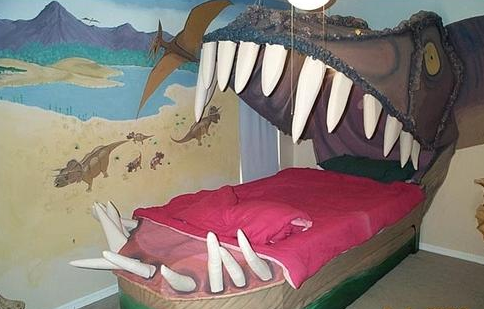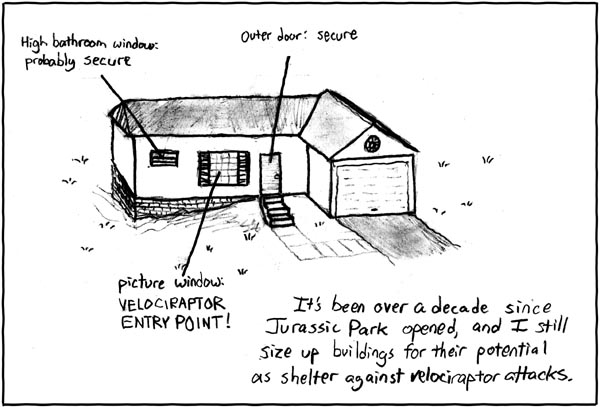Preschool me wanted to be an archaeologist because it was the longest word I could spell and dinosaurs were awesome. They had long necks! Feathers! Sharp teeth! Scaly skin! These were huge real-life monsters, totally unlike the tame dogs, cats, birds, and insects that were the only animals I saw on a daily basis in my suburban neighborhood. They had fancy Latin names that meant wonderful things: thunder lizard, tyrant king, swift stealer, bird lookalike. I read every dinosaur book I could get my hands on.

I was not yet twelve when the alchemy of Jurassic Park turned the lead of my curiosity into pure 24-carat terror. Even I knew this was crazy: Veliciraptors are all dead, I told myself repeatedly. Velociraptors are all dead, everywhere. It did not help.
The mystery was only solved years later when I was cleaning my bedroom and came across a forgotten book from my childhood: How to Keep Dinosaurs. There were convincing illustrations of people with dinosaurs as pets, as vermin, as cattle, as transportation. The details were impressively realistic: when riding an ornithomimus, the walk and canter gaits are quite pleasant, but the trot is a bone-jarring nightmare. The riders wore those black felt dressage hats and jodhpurs. And yes, there were velociraptors in there.
I had read this book hundreds of times.
I'd been conned by my own brain.
All the time I was reading the nonfiction dinosaur books and then going back to this fictionalized dinosaur book. The contradictions had never been resolved: instead, I had kept two stories going in my head, the one where dinosaurs lived millions of years ago in prehistoric jungles, and the one where you kept a Triceratops in a paddock out back. This second story was a secret I'd kept from myself until one measly action flick gave it a poke and sent it scurrying into the light.
Fiction could mess with the world. I am still getting over the shock.
